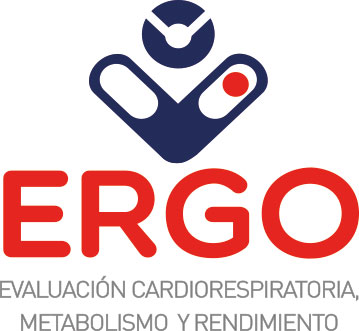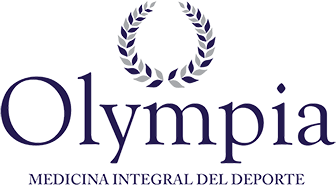Cardiopulmonary and musculoskeletal metabolic evaluation for sport and healthy physical activity.
Fill in all the fields possible and one of our executives will contact you within 48 hours to make your appointment.

ItERGO laboratory
Cardiopulmonary and musculoskeletal metabolic evaluation for sport and healthy physical activity.
-If we could give each individual the right amount of food and exercise, neither too little nor too much, we would have found the safest path to health-
Hippocrates
460-377 BC
The ERGO Laboratory arises from the need that the Mexican Southeast has for the correct cardiopulmonary evaluation of its population. Whether for general health, for work reasons or for sport, our laboratory is the best option to carry out the evaluation of your health status.
The cardiopulmonary evaluation consists of different stages but focuses on the cardiopulmonary stress test with calorimetry and gas analysis. Bellow will be explained all the phases of the cardiopulmonary evaluation.
1. Specialized medical consultation: carried out by a certified specialist in sports medicine. It serves to detect risk factors, determine the macro work cycle of the athlete as well as to rule out metabolic or musculoskeletal pathology that may affect the athlete’s practice.
2. Anthropometry: Evaluation of patient measures such as weight, height, percentage of fat, muscle mass, water, bones, among others.
3. Evaluation of the posture: The posture is of great importance not only because of the ailments that they cause but also the sport can be reduced due to poor muscular economy.
4. Tread evaluation: Knowing the type of foot (pronator, neutral or supinator) is of great importance. It doesn’t only show us in what kind of sports a person can have a dynamic advantage, but it also helps us prevent injuries or cure pain that has been afflicting the practice of sports for some time.
5. Calorimetry at rest: Basal energy expenditure is the key in any diet or nutrition program. Our calorimeter is the only real way to know it. Having this information you can offer a proper diet whether to lose or gain weight or a specialized diet for sports. Similarly, the basal energy expenditure will be important to determine the areas of physical work in athletes.
6. Resting electrocardiogram: It gives us an image of how our heart works regularly during rest. It is important study since it allow us to observe changes in heart size and rhythm.
7. Sudden death criteria: Validated in patients under 35 years. It helps us recognize risk factors that can influence sudden death during sports.
8. Spirometry:Study that allows us to know lung capacities.
9. Stress test: We have different types of stress tests.
A) Simple stress test: normally known for its use in cardiology, it is used to look for cardiac pathology, especially cardiac ischemia (Cardiac suffering). It is usually done in the treadmill and takes the heart to 85% of the theoretical maximum heart rate. It is not the ideal test for an athlete.
B) Stress test with gas analysis for athletes: As its name implies, it is the benchmark test for athletes since it is complemented by the use of the gas analyzer and metabolometer, which will give us an accurate reading of the parameters of importance for athletes such as maximum oxygen consumption (VO2max), peak Vor and maximum fat burning zone (FAT MAX), aerobic and anaerobic threshold among others. Generally these tests reach 100% of the maximum heart rate or more and are performed on treadmill and / or bicycle depending on the type of athlete.
Analysis and delivery of results.
After performing the cardiopulmonary evaluation for sport you will know:
A) If you present any type of risk for the practice of a sport.
B) Your current body composition as well as the ideal for your lifestyle, age and sport of preference.
C)Your type of posture and if there are alterations in it.
D) Type of tread as well as the type of sports shoes that will improve your sports practice.
E)Baseline vital signs, blood pressure, O2 saturation, resting heart status.
F)Actual basal energy expenditure.
G)How your heart behaves during the stress of sports and post sports.
In short, knowing your own body better and how to maximize its performance without putting your health at risk so you can enjoy your sport or physical activity whether you do it for health, recreation or fun.
FREQUENT QUESTIONS.
1. If I am not an athlete, should I take a stress test?
Yes. The stress test helps us to know how the heart is behaving during moments of stress and physical effort that do not necessarily occur during the practice of a sport. Examples of physical exertion that can trigger cardiac distress are heavy lifting, running to reach a person and even going through a strong disgust.
2. What is the maximum oxygen consumption (VO2max)?
It is a metabolic unit that tells us when the oxygen we are breathing is actually being used for the body’s energy functions. In the same way, knowing this parameter gives us a very clear idea of the aerobic capacity (physical condition) that an individual possesses. Example: activities such as eating, personal hygiene, slow walks occupy 1 to 2 meters, which translates into 3.5 to 7 ml / kg / min of VO2max, activities such as walking at more than 5 km / hr, climbing stairs moderately fast and Work at home occupies approximately 15 ml / kg / min of VO2max on the other hand a marathon runner who finishes his competition in the first places usually handles above 70 ml / kg / min of VO2max.
3. Have I always played sports and never had a stress test, why should I do it?
First of all, the aging factor that affects our cardiac response and pressures on physical effort is important, as is our diet that puts us on 2nd place in the world in obesity and 1st place in childhood obesity. To this we must add the lack of culture that exist in gyms, sports centers and in the country in general to carry out cardiopulmonary resuscitation maneuvers successfully. Putting this in context is better to know in advance if we have any physical alteration that puts us at risk of sudden death during sports. Generally, asymptomatic adults before the age of 35 who present with sudden death there is a cardiac malformation and in older people there are problems related to lifestyle, nutrition and environmental factors such as excessive heat and humidity of our environment.
4. What is the difference between the cardiology and sports stress test?
The cardiological stress test is designed to stress the moving heart using the legs and tries to make constant increases in the speed and inclination of the treadmill to accomplish this end. The patient is taken up to a maximum of 85% of his theoretical maximum heart rate (HRmax) and stops when the patient reaches this point, presents some symptoms such as chest pain, difficulty breathing or pain in legs, arms or finally if malignant electrocardiographic changes are observed on the screen. It is designed to look for obstruction in the coronary arteries that condition suffering from the heart muscle also called myocardium. Together with the heart, blood pressure and its behavior are also evaluated during the test.
The sports stress test is similar in concept but more complete since it is carried out with a specialized gas analysis to accurately know VO2max. This means that we can not only know the behavior of the heart and blood pressure, but also that this test will give us important information to determine the appropriate training zones and thresholds for different types of sports (anaerobic or aerobic sports) and actual caloric consumption. We use evaluation protocols similar to the practice of sport and it can be done on tradmill, bicycle or with crank, for example a cyclist would be more interested in the bicycle, a marathoner the treadmill and a swimmer the cranks or cycloergometers that most closely resembles your sport.
5. For whom is calorimetry indicated?
It is indicated for anyone who would like to know their caloric expenditure at rest. What is caloric expenditure at rest? It is the number of calories that our body uses for the simple fact of living and fulfilling its metabolic functions. It is important for the calculation of diets and exercise programs that have scientific support.
Example: Prescribing a diet and exercise program without a calorimetry is like prescribing insulin without first doing a blood glucose test or prescribing medications for hypertension (high blood pressure) without first measuring the pressure with a baumanometer.
6. For whom is an athlete’s stress test indicated?
In athletes it is important to know that the heart is working properly and that the risk factors are minimal. In addition, high-performance athletes suffer changes in the frequency of heartbeats, sometimes in rhythm and very frequently in the size of the heart. All these adaptations are important to be able to exercise high intensity but can be life-threatening if there are other predisposing factors of sudden death. In addition this test helps to improve workloads and training and to confirm that the training is working when repeated in subsequent months.
7. If I suffer from any condition such as overweight, diabetes, hypertension or dyslipidemia (high cholesterol or triglycerides), am I a candidate for cardiopulmonary evaluation?
Yes. The American College of Sports Medicine (ACSM) has very clear guidelines for those who should go to the sports doctor to limit the risk of sudden death during the practice of a sport. The aforementioned pathologies are important risk factors conditioning cardiovascular pathology.
Fill in all the fields possible and one of our executives will contact you within 48 hours to make your appointment.
Address:
Street Margaritas #49, Sm.22, M.25, Cancun, Quintana Roo, Mexico.
Working hours:
Monday to Friday from 9:30am to 2:00pm and 4:30pm to 9:00pm
Phones:
- 998) 884-02-86
- (998) 884-12-29
Follow us:
Email:
medicinadeportiva@live.com
